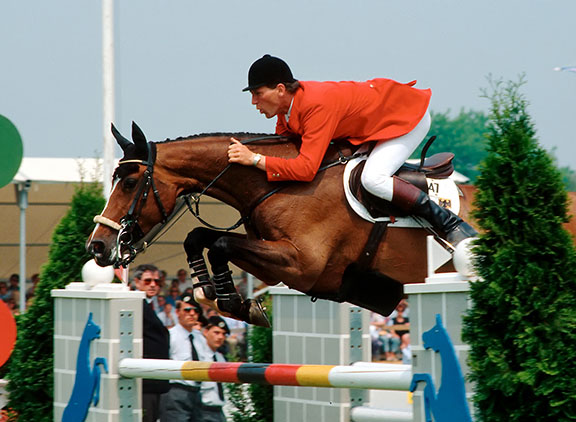By Christopher Hector
Photography: Peter Llewellyn
What makes a good broodmare...? When you get two of Europe’s most respected breeders of jumping horses who have diametrically opposing views on mares, then you quietly go to work on the databases to try and find which of them is correct, and it is a real surprise to learn that 3the numbers support both opinions.
The equally respected Belgian breeder, Joris de Brabander has the opposite opinion. I asked: You obviously don’t believe the theory that very good competition horses never produce very good offspring… And he replied: “That’s not true. The better they are, the better they can jump, the better the foal. It is true that very good jumping horses normally don’t have good chances, they are too old to breed, or they are in the hands of rich people, or they are in countries where they don’t have a breeding culture, and very often when a guy has a very good competition mare, he uses his own stallion which is very often not good enough. If you breed to very, very good mares, it is always better than breeding to the others.”
And yet... the most famous of his mares, Fragance du Challis (Jalisco B - Nifrane x Fury de la Cense), who has produced astonishing jumpers, was herself at best a respectable national-level jumper, whose only international placing was a 45th in a 1m35 class at two-star Wieze. Unlike most jumping mares, she started having foals as a two-year-old and continued supplying eggs throughout her jumping career, rather than turning to breeding at the end of a long international career.
Classic Touch
CLICK HERE TO SUBSCRIBE TO BREEDING NEWS
SUBSCRIBERS CAN READ THE COMPLETE ARTICLE BY LOGGING IN AND RETURNING TO THIS PAGE





